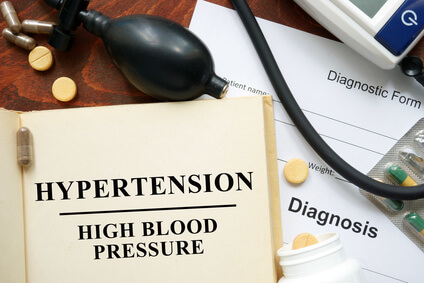These new hypertension guidelines (which were as long-awaited as the American ones, back then) finally emerged in Barcelona, at the European Society of Hypertension (ESH) Congress. The document was issued jointly with the European Society of Cardiology (ESC).

- Definition of hypertension: A persistent elevation in office systolic blood pressure ≥140 mmHg and/or diastolic blood pressure ≥90 mmHg, which is equivalent to a 24-h ambulatory monitoring of ≥130/80 mmHg or a home monitoring average of ≥135/85 mmHg. Here, in the first commandment, which addresses definition and parameters, we find the biggest difference or major “sin allowed” compared with the guidelines written across the Atlantic.
- Screening and diagnosis of hypertension: Screening programs should be established to ensure that office blood pressure figures are measured in all adults at least every 5 years and more frequently in patients with high normal blood pressure. When hypertension is suspected, this diagnosis should be confirmed either by repeated office measurements at different times, or by home or 24-h ambulatory monitoring records.
- When to consider drug treatment: Adults with grade 1 hypertension (office blood pressure: 140-159/90-99) who are over 80 years old should receive drug treatment after a period of lifestyle changes alone. For high-cardiovascular-risk patients with grade 1 hypertension or higher (e.g., grade 2: 160/100 mmHg), drug treatment should be started immediately, simultaneously with lifestyle changes.
- Special considerations for frail or elderly patients: For patients over 80 years old who have not yet received drug treatment, this should be considered with values ≥160 mmHg. For frail and elderly patients, the decision must be made following clinical criteria and benefit expectations on an individual patient basis. Treatment should never be denied based only on age.
Read also: Debris Captured by SENTINEL Devices Result Different across Different Valves.
- How low should blood pressure be lowered?: Ideally, office systolic blood pressure should be lowered to <140 mmHg in all treated patients, including generally healthy elderly patients who can tolerate treatment well. The 130-mmHg target should be applied to most patients, if treatment is well tolerated. Even levels lower than 130 can be considered, but only in younger patients and never in patients aged 65 years or more. Similar values are recommended for patients with diabetes. A systolic blood pressure target of 120 mmHg is not warranted by a cost-benefit analysis. The office diastolic blood pressure target should be <80 mmHg.
- Lifestyle changes: Besides drug therapy, the treatment of hypertension involves strict lifestyle changes. Lifestyle interventions are important because they can delay the need for drug treatment or complement its effect. Sodium restriction, alcohol moderation, healthy eating, regular exercise, weight control, and smoking cessation, all have health benefits way beyond their impact on blood pressure control.
- Start treatment with 2 drugs in most patients: Monotherapy is usually inadequate therapy for most patients, especially with these guidelines, which lowered targets compared with previous reference documents. Treatment with two drugs should now be considered usual care for hypertension. The only exception is limited to patients who are barely over their recommended target and who might achieve that target with a single drug, and frail or extremely elderly patients in whom a more cautious reduction might be more appropriate.
Read also: Surgical Redo Mitral Valve Replacement vs. Valve-in-Valve in Failed Bioprosthetic Valves.
- A single pill: Poor adherence to treatment is directly related to the number of pills prescribed and is the most significant factor contributing to poor control. A single pill combining 2 drugs is now the preferred initial strategy; a single pill combining 3 drugs may be considered when necessary. This will control the levels in most patients and should improve adherence so as to achieve the desired long-term outcomes.
- Simplification of the drug treatment algorithm: A combination of an angiotensin-converting enzyme inhibitor or an angiotensin receptor blocker with a calcium channel blocker or a thiazide diuretic should be used. Beta blockers should be used only when there is a specific indication for their use, such as angina pectoris, post acute myocardial infarction, heart failure with reduced ejection fraction, or when heart rate control is required.
- Management of cardiovascular risk in hypertensive patients: Hypertensive patients frequently have concomitant risk factors. Statin therapy should be used in hypertensive patients with established cardiovascular disease or moderate or high cardiovascular risk according to the SCORE system. Statin therapy can also be beneficial in hypertensive patients with low-to-moderate risk. Antiplatelet therapy (especially low doses of aspirin) is clearly indicated for secondary prevention, but is not recommended for primary prevention (patients with no evidence of cardiovascular disease).
Original title: Ten Commandments of the 2018 ESC/ESH HTN Guidelines on Hypertension in Adults.
Reference: Bryan Williams and Giuseppe Mancia. European Heart Journal (2018) 39, 3007-3019.
Subscribe to our weekly newsletter
Get the latest scientific articles on interventional cardiology
We are interested in your opinion. Please, leave your comments, thoughts, questions, etc., below. They will be most welcome.





